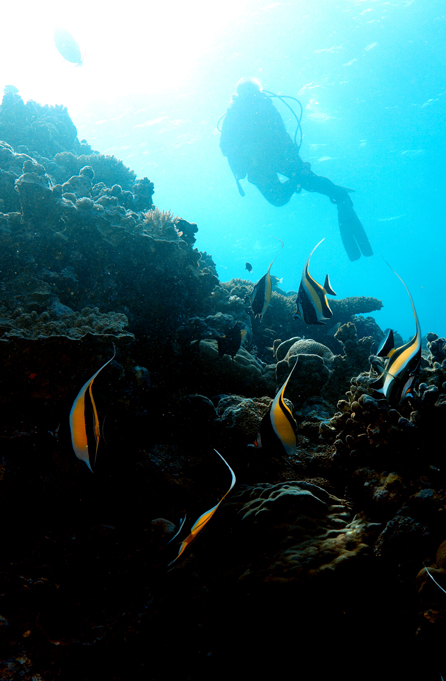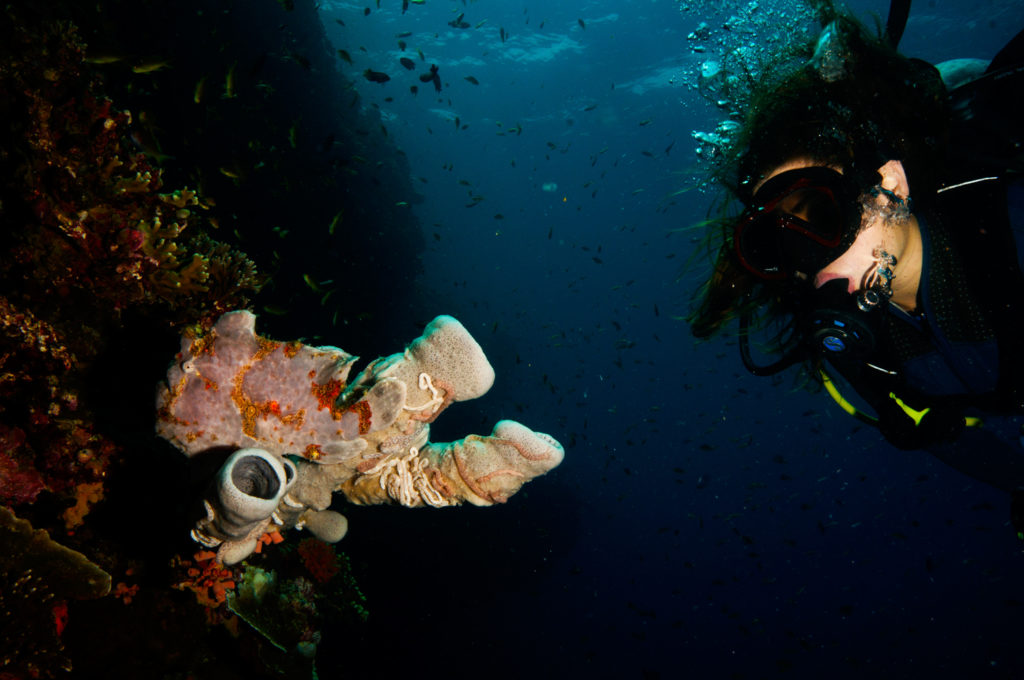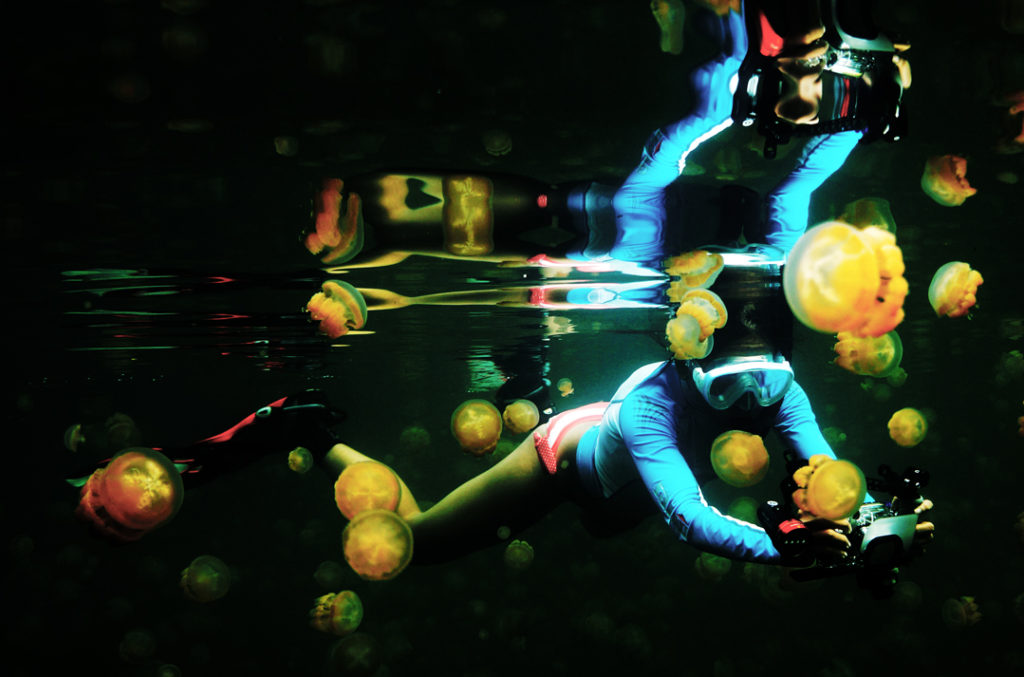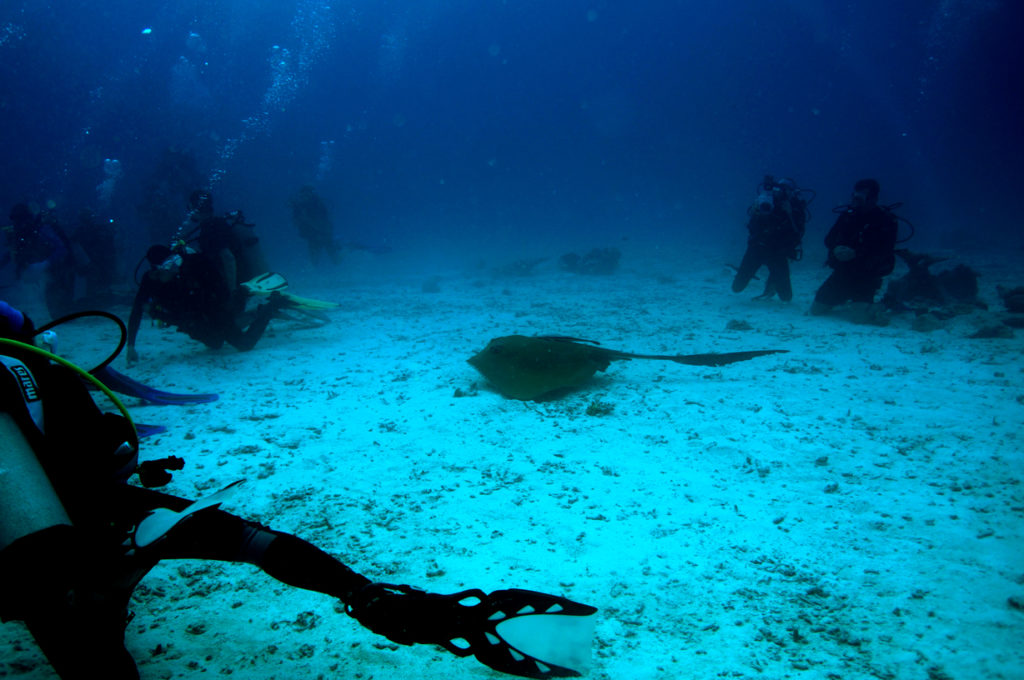Photographers sometimes become frustrated that they just can’t seem to capture a photo of a particular creature; trying to do so becomes a hunt and the subject becomes the prey. How do you think that makes your subject feel? Here we’ll take a look at how a diver can facilitate better marine life interactions by focusing on the diver’s behavior.
Most underwater animals are wary of strange creatures that fall from the sky, spewing bubbles from their heads, not to mention traveling together in packs. If you wish for positive marine life interactions, you must appear not to be a threat. A rebreather is one option, and the reduction of bubbles definitely helps, but this is only one part of the puzzle. Even those on an open-circuit system can get much closer and make animals comfortable.
Staying calm and relaxed yourself is a huge part of maintaining the calm on a reef. We’ve all seen the inconsiderate or inexperienced diver who darts all over a dive site, chasing every animal for photos. Ever notice that it doesn’t just affect the animal that person is chasing? The whole reef goes on high alert and becomes much more cautious.
Another great reason to move slowly and calmly underwater is that not even Michael Phelps on freediving fins would be able to catch an animal with its back turned to him if it doesn’t want him to. Better to let that one elusive subject go and focus on the creatures that are sticking around and not on high alert.
When it comes to noise, divers will remember from their entry-level course that sound travels better in the water. Your heart makes sound, and when it races due to exertion, anxiety or excitement, the creatures in the water notice and respond accordingly. In turn when your heart rate is low, it means quieter breathing with smaller bubbles.
 When it comes to where to look, locking your gaze directly onto an animal is something a predator would do. Use your peripheral vision as much as possible and shift your focus. Creatures know when you’re watching them and we all know it’s creepy when someone stares at you.
When it comes to where to look, locking your gaze directly onto an animal is something a predator would do. Use your peripheral vision as much as possible and shift your focus. Creatures know when you’re watching them and we all know it’s creepy when someone stares at you.
Proper spacing between divers can also make a big difference in marine life interactions. Although we should stay close to our buddies, and no one wants to miss out on an exciting sighting, when it comes to the underwater world, large groups of a species typically get together for three reasons — for protection, for mating, or to increase their chances for feeding. By allowing a bit of distance between your buddy team and other teams, you increase your chances of good interactions with the resident marine life. If everyone is hanging around a section of coral waiting for a mandarinfish to show, just wait a little while. The other divers will move on, and when they do, head over to the same area and you will likely notice that little fish become much braver with fewer people around.
Waiting for an animal’s curiosity to override its fight-or-flight response also helps. Marine animals are immensely more intelligent than they are given credit for and they are curious. If they don’t feel as though they are being hunted or pursued, they may wish to investigate the strange being that has entered their realm. Take a second to settle on a sandy patch nearby or just hover in place as calmly as possible.
If something you want to see hides, hang out nearby and appear to be focused on something else. The subject will often reappear to relocate or simply check to see if the coast is clear. Trying to get close to a shark? Ignore it. Turn your back and take your eyes off of it. Just be mindful of the species you’re trying to interact with — not everything is shy.
To blend in, follow the example of many underwater predators, which often use camouflage. Use the terrain. Hang close to the bottom or against a wall, where your shape is less discernable than if you’re hanging in the water column. Use bommies, rocks, overhangs and corners to conceal your presence. If you need to close the distance, move slowly and steadily towards your subject. Think of yourself as a ninja cuttlefish.
I often see divers chasing pelagics out into the open ocean, but these animals will only come as close as they feel comfortable. If you leave the protection of cover, you’re much more clearly visible, less interesting to animals, and easier to avoid. When you enter the blue, they often become uncomfortable and are much more likely to move on.
Finally, one of the best ways to increase your odds of a positive interaction is to observe an animal’s flight patterns, from a distance if possible. When we obstruct the pattern, the animal changes the path. When gathering around a cleaning station, for example, make sure to avoid the entry and exit paths. If hooked in on a wall, do not sit right on the edge; leave an open route for the sharks to travel. Once you see the patterns, simply place yourself near the animal’s path and wait patiently. If someone is ruining the pattern by blocking off the path or pursuing the animal, don’t get upset and focus on where the creature was; instead, focus on where it will be next.
Hopefully these tips will help you in your pursuit of photos or quality marine life interactions. Be polite and respectful, just as you would if visiting a friend’s home, and you’ll find that animals are far more willing to welcome you to theirs.




